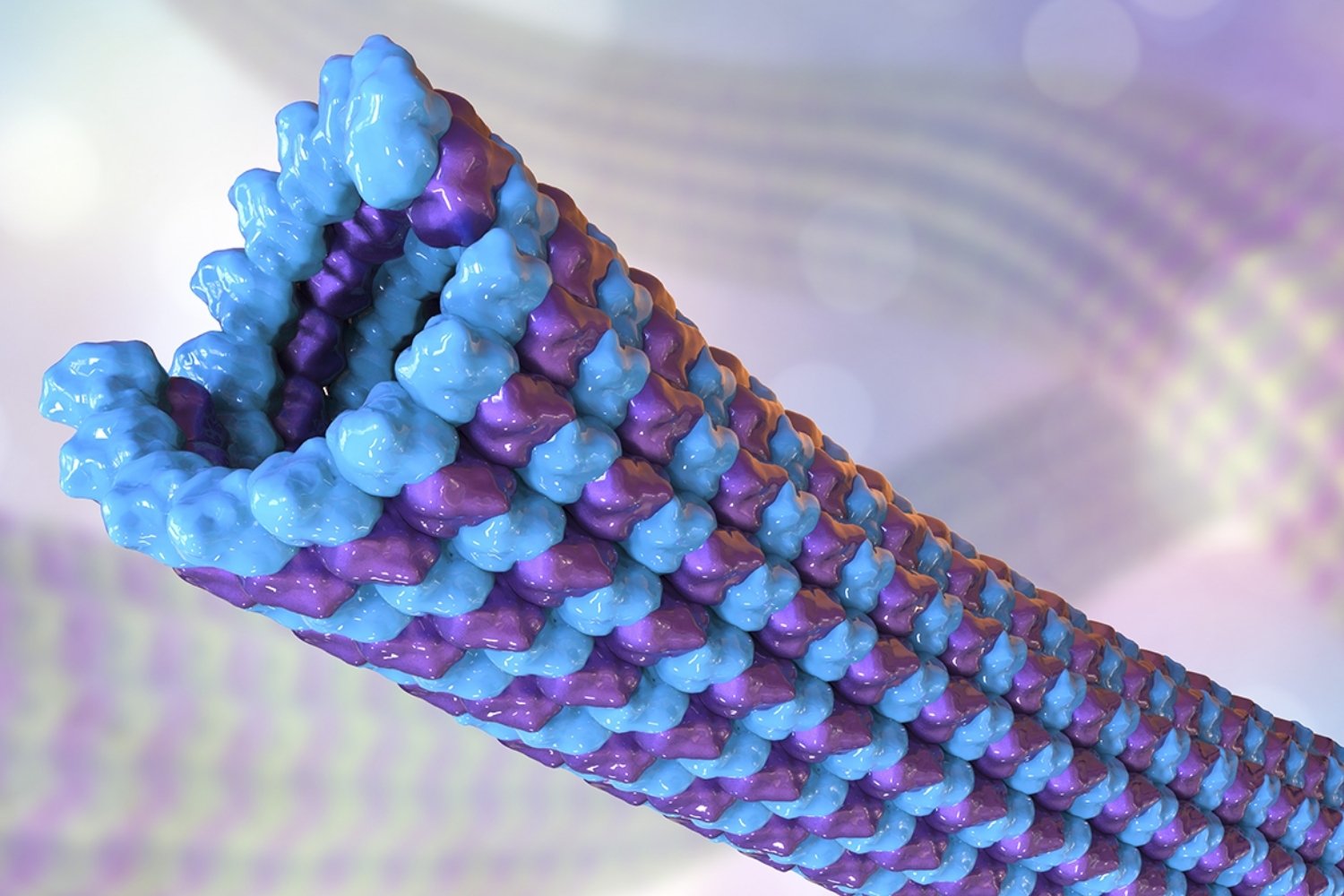
Microtubules are tiny but mighty structures inside cells. They play a crucial role in cell shape, division, and transport. What exactly are microtubules? Microtubules are cylindrical tubes made of protein called tubulin. They act like highways inside cells, helping move organelles and other cargo. Think of them as the cell's skeleton and transport system rolled into one. Without them, cells couldn't divide properly or maintain their shape. They even help in muscle contraction and nerve cell function. Understanding microtubules can give us insights into diseases like cancer and Alzheimer's. Ready to learn more? Let's dive into 37 fascinating facts about these cellular powerhouses!
What Are Microtubules?
Microtubules are tiny, tube-like structures found in cells. They play a crucial role in maintaining cell shape, enabling cell movement, and facilitating cell division. Let's dive into some fascinating facts about these cellular components.
-
Microtubules are part of the cytoskeleton, which provides structural support to cells.
-
They are made up of protein subunits called tubulins.
-
Each microtubule is a hollow cylinder, about 25 nanometers in diameter.
-
Microtubules can grow and shrink by adding or removing tubulin subunits.
-
They are dynamic structures, constantly changing in length.
Functions of Microtubules
Microtubules are involved in several essential cellular processes. Here are some key functions they perform.
-
They help in the separation of chromosomes during cell division.
-
Microtubules form the mitotic spindle, which pulls chromosomes apart.
-
They serve as tracks for the movement of organelles within cells.
-
Motor proteins like kinesin and dynein move along microtubules, carrying cellular cargo.
-
Microtubules are involved in intracellular transport, moving vesicles and other materials.
Microtubules in Cell Movement
Microtubules play a significant role in cell movement. Here's how they contribute.
-
They are essential for the formation of cilia and flagella, which help cells move.
-
Cilia are hair-like structures that beat in a coordinated manner to move fluids over cell surfaces.
-
Flagella are whip-like structures that propel cells, such as sperm cells, through liquid.
-
Microtubules provide the structural framework for cilia and flagella.
-
They also help in the movement of cells during processes like wound healing.
Microtubules and Cell Shape
Microtubules help maintain the shape of cells. Here are some interesting facts about their role in cell shape.
-
They resist compression forces, helping cells maintain their shape.
-
Microtubules interact with other cytoskeletal elements like actin filaments and intermediate filaments.
-
They help in the formation of cell extensions like axons and dendrites in nerve cells.
-
Microtubules are involved in the formation of the cell cortex, which supports the cell membrane.
-
They play a role in the spatial organization of the cell's interior.
Microtubules in Plant Cells
Microtubules are not just found in animal cells; they are also present in plant cells. Here are some facts about their role in plants.
-
They help in the formation of the cell wall during cell division.
-
Microtubules guide the deposition of cellulose fibers in the cell wall.
-
They are involved in the growth of plant cells by directing the expansion of the cell wall.
-
Microtubules help in the movement of organelles within plant cells.
-
They play a role in the response of plant cells to environmental signals.
Microtubules and Disease
Microtubules are involved in several diseases. Here are some facts about their role in health and disease.
-
Abnormalities in microtubule function can lead to cancer.
-
Microtubules are targets for cancer drugs like taxol, which stabilizes them and prevents cell division.
-
Defects in microtubule-associated proteins can cause neurodegenerative diseases like Alzheimer's.
-
Microtubules are involved in the transport of amyloid precursor protein, which is linked to Alzheimer's.
-
Mutations in tubulin genes can cause a variety of genetic disorders.
Microtubules in Research
Microtubules are a focus of extensive research. Here are some interesting facts about their study.
-
Researchers use fluorescent markers to visualize microtubules in live cells.
-
Electron microscopy provides detailed images of microtubule structure.
-
Studies on microtubules have led to the discovery of motor proteins like kinesin and dynein.
-
Microtubules are used as models to study dynamic instability, a process where they rapidly grow and shrink.
-
Research on microtubules has implications for understanding cell biology and developing new therapies.
Fun Facts About Microtubules
Let's end with some fun and quirky facts about microtubules.
-
Microtubules can form complex structures like the mitotic spindle, which looks like a starburst.
-
They are involved in the formation of the axoneme, the core of cilia and flagella, which has a "9+2" arrangement of microtubules.
The Final Word on Microtubules
Microtubules are more than just tiny structures in cells. They play a huge role in cell division, transport, and structure. Without them, cells couldn't function properly. These protein filaments are like the highways of the cell, moving organelles and molecules to where they need to be. They also help cells keep their shape and form the spindle fibers that separate chromosomes during cell division. Understanding microtubules can lead to breakthroughs in medicine, especially in cancer treatment, where disrupting microtubule function can stop cancer cells from dividing. So, next time you think about the tiny building blocks of life, remember how crucial microtubules are. They might be small, but their impact is enormous. Keep exploring the microscopic world; there's always more to learn.
Was this page helpful?
Our commitment to delivering trustworthy and engaging content is at the heart of what we do. Each fact on our site is contributed by real users like you, bringing a wealth of diverse insights and information. To ensure the highest standards of accuracy and reliability, our dedicated editors meticulously review each submission. This process guarantees that the facts we share are not only fascinating but also credible. Trust in our commitment to quality and authenticity as you explore and learn with us.
